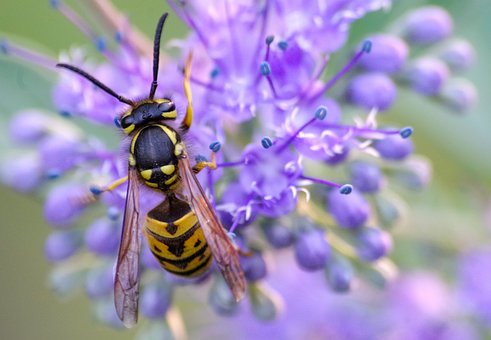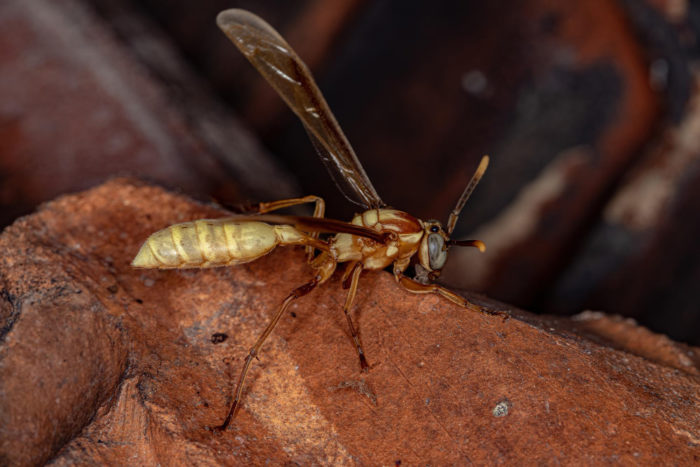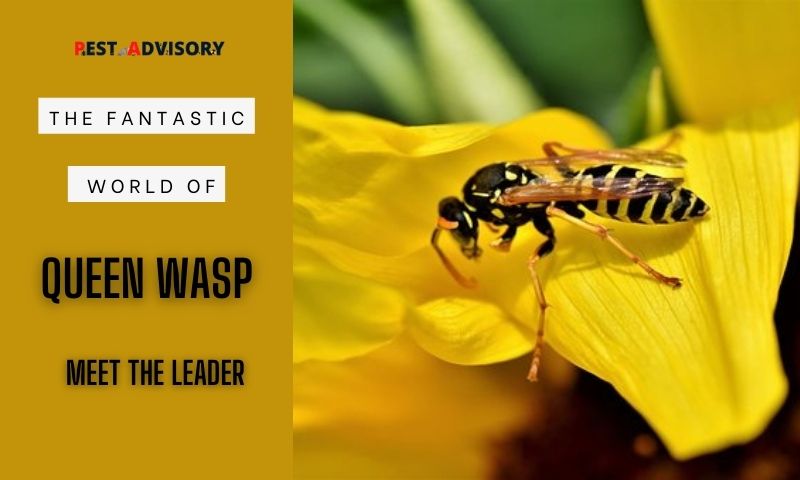Have you ever wondered after seeing a wasp nest that, is there any boss among them or whom they serve?
Well, you pondered upon the right question. They do, in fact, have a Queen as their leader. They don’t have to bow down to her but bring her food.
Now you must be curious about who is the queen of wasps. How to know which wasp is the queen? What will happen if the queen of wasps dies?
Important Note: If you're tired of pests and want a reliable solution, then you should definitely consider seeking help from a professional pest control company. DIY solutions can be effective, but if you're dealing with a significant pest infestation, you don't want to rely solely on DIY methods. Pest control companies typically don't charge huge fees. You can fill out this form to receive free quotes from the top local pest control companies, and compare the quotes and see for yourself. Then, finally, your pest problems will be eliminated for good.
Get answers to all the questions by just simply reading this article.
Do Wasps Have a Queen?
Yes, wasps do have a queen. Like bees wasps are social insects. The queen is responsible for laying eggs and starting/maintaining the colony. She is larger than the other members and the only one capable of fertilizing eggs that develop into female workers, drones, and future queens.

Information about Queen of Wasps
The queen wasp is the leader of the nest and is responsible for laying eggs to ensure the survival and growth of the colony.
Queen wasps are typically larger in size than worker wasps, measuring around 2-2.5cm in length.
They have bright yellow and black stripes, a distinct triangular-shaped head, and a sharp pointy sting.
The queen wasp also has a distinctive “waist,” which is a narrow section between the thorax and abdomen.
The queen wasp’s role is critical to the survival of the colony, as she lays fertilized eggs that will hatch into female workers, drones, and future queens.
If the queen dies, the workers may attempt to lay eggs, but the offspring will always be male.
Queen Wasp vs Normal Wasp
There are some differences between queen wasps and normal worker wasps, but they can be hard to distinguish based on appearance alone.
Queen wasps are generally larger in size than worker wasps, with queens measuring around 2-2.5cm in length, whereas workers measure approximately 1.2-1.7cm.
Queen wasps also tend to have a longer abdomens than workers.
However, in terms of coloration and markings, there are no significant differences between the two. Both queen and worker wasps typically have black and yellow stripes.
| Queen Wasp | Worker Wasp | |
|---|---|---|
| Size | Larger, around 2-2.5cm in length | Smaller, approximately 1.2-1.7cm in length |
| Shape | Similar body structure with a narrow waist, two pairs of wings, and six legs. | Similar body structure with a narrow waist, two pairs of wings, and six legs. |
| Appearance | The black and yellow-striped body may have a more elongated abdomen and a slightly different color pattern. | Black and yellow-striped body. |
| Lifespan | Longer, up to a year | Shorter, typically 12-22 days |
| Egg-laying capacity | The only wasp that can lay eggs. Lays between 10-20 eggs and the eggs hatch into worker wasps. | Cannot lay eggs, focus on tasks such as gathering food and building the nest. |
What Will Happen if the Queen of Wasps Dies?
You must be wondering, what will happen if Queen Wasp dies. Will they live without a Queen?
Well, when the queen dies or vanishes, the other wasps in the nest agree on who will take her place. And if that queen vanishes as well, they’ll know who’ll be chasing her.
The queen maintains a low profile. All the other worker wasps live in a perpetual state of war.
Things get upended when the calm queen dies or is removed from the nest. Only one worker wasp gets incredibly aggressive all of a sudden.
Within minutes following the queen’s disappearance, this worker starts attacking the wasps in her immediate vicinity at a rate that is 10 to 100 times higher than typical.
No one fights back as she distributes her assaults evenly among those nearby. The whole thing is a ploy to proclaim that this wasp is the heir to the throne.
The heir’s aggression fades over the next week or so, and her ovaries begin to develop. She transforms into another quiet-loving, egg-laying robot.

Frequently Asked Questions
How do you know which wasp is the queen?
The queen wasp is the nest’s leader. A few characteristics that can help you to recognize her are her body length.
She also has a triangle-shaped head, a pronounced ‘waist,’ and a strong pointy sting, as well as brilliant yellow and black stripes.
How many queens can wasps have?
In general, a wasp colony will have only one queen at a time. This is because the role of the queen is to lay eggs and be the sole reproductive female in the colony.
However, in some species of wasps, such as paper wasps, there may be multiple queens sharing responsibility for laying eggs and leading the colony.
Can a wasp turn into a queen?
Wasps can develop into either a queen or worker based on the amount of food they receive as larvae.
Worker wasps cannot become queen wasps, but if the colony loses its queen, a worker can become a queen through special feeding.
So, while it is not a simple process, a worker wasp can “transform” into a queen wasp under certain circumstances.
Can the killing of the queen wasp destroy the nest?
It is the queen’s job to feed the larvae so that the nest can thrive. At this stage, removing the queen can help halt the spread of a wasp nest.
The first batch of workers will perish if the queen does not provide nourishment to the larvae.
This strategy also succeeds for wasps in the winter, when the queen is the colony’s sole survivor. When the temperature grows cooler, a lot of the workers will pass away.
Conclusion
Now you know much about the Queen of wasps. You can use the ‘Killing of Queen Wasp’ technique to prevent a new nest.
Wear proper dress before performing anything like if you are thinking of doing it on your own. Otherwise, you will startle them and end up having sting pains.

